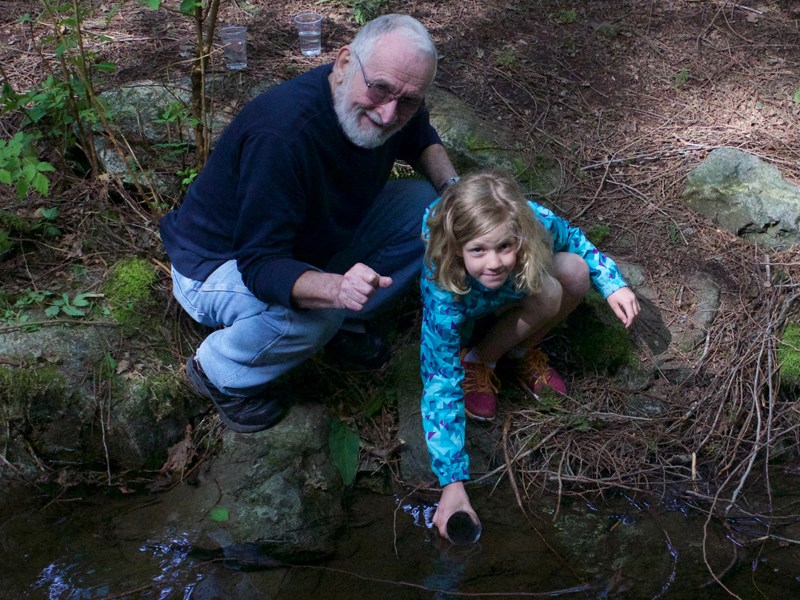Releasing salmon fry into the stream at Lang Creek has become something of an annual rite of spring for young Powell River students, according to Powell River Salmon Society president George Illes.
The society’s Classroom Incubator Program began in the 1990s with the aim of teaching students about salmon, biology and stewardship, and includes plenty of opportunities for hands-on participation.
“In the fall we bring all the kids out one school at a time and they witness the spawning,” said Illes. “Then after Christmas we set up the cool tanks in each of the schools.”
The cool tanks house the salmon eggs, which eventually hatch. The final stage is releasing the fry into the stream.
“They get the whole gamut,” said Fisheries and Oceans Canada education coordinator for the Sunshine Coast Diane Sanford, who has been leading the program aimed at students grade three through seven since 2002.
Chinook, coho and chum are spawned at the hatchery every year.
“We produce anywhere between 900,000 and 1.1 million chinook a year, 750,000 to 850,000 coho and 750,000 to 850,000 chum,” said Illes.
Pink salmon are spawned every other year, he added.
Lang Creek Hatchery was recently renamed the Dobler Salmon Centre in honour of Alexander Dobler, who died last year.
“Alex was a very major player in salmon enhancement for Powell River Salmon Society,” said Illes.
Local school programs are about scientific discovery and encourage students to become curious about the role humans play in the cycles of other living creatures, said Sanford.
“It’s so very important for young people to make connections with the natural world,” said Sanford. “If they don’t start at a young age, they never do. I really feel that strongly.”
Having the chance to learn firsthand is a valuable experience and leads to some great questions and discussions with the students, according to Sanford.
“You see the light bulb goes on,” she said. “The kids realize that humans are the largest consumer of salmon in the world. That is sometimes a real epiphany.”



